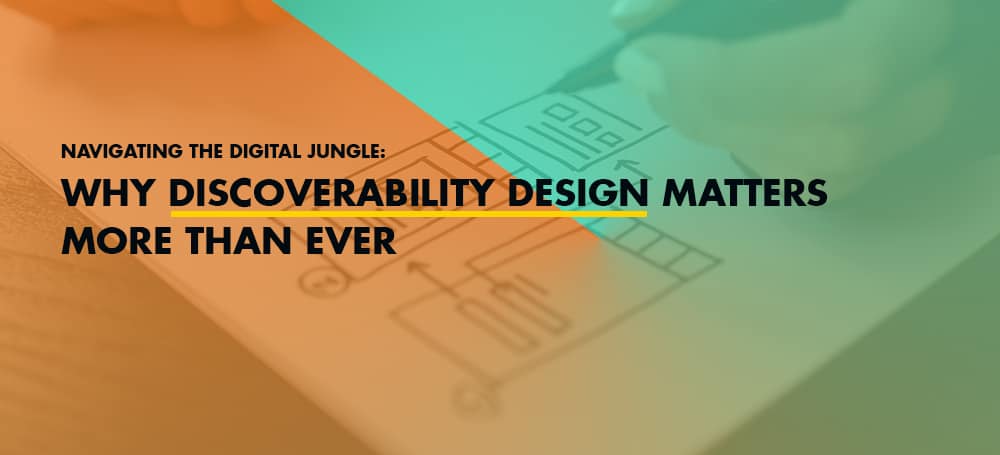

Navigating the Digital Jungle: Why Discoverability Designing Matters More Than Ever
Designing for discoverability also means making sure your content is accessible and user-friendly, with clear navigation, intuitive layouts, and engaging visuals.
In today’s world of online content, the user is king. With so much information available on the internet, users are no longer content to spend hours searching for what they need. Instead, they want relevant, valuable content that is easy to find and consume. As a content creator or marketer, it’s your job to meet these expectations by designing your content for discoverability. This means considering how users will search for and interact with your content, and tailoring your design and distribution strategies to make it as easy as possible for them to find and access what they need. In this blog post, we’ll explore the key principles of designing for discoverability, and show you how adopting this approach can transform your content marketing strategy. Whether you’re a seasoned content creator or just starting out, you’ll learn how to create content that not only meets your users’ needs
1. Understand user needs when creating content
The key to success in creating effective content lies in understanding and catering to user needs. The principles of user experience (UX) and user design provide us with the tools to achieve this goal. In today’s digital age, users have high expectations when it comes to finding information, and their experience can make or break a website. By understanding user behavior and preferences, we can design content to be easily discoverable, digestible, and engaging. When creating content, we must keep in mind that the user is king, and their satisfaction is paramount. By prioritizing user needs and designing with discoverability in mind, we can create content that is not only effective and engaging but also builds trust and brand loyalty.
2. Implement navigation and search functions to aid discoverability
When it comes to user experience and design, discoverability is a crucial component that is often overlooked. Users should not have to spend excessive amounts of time searching for the content they need. Therefore, implementing navigation and search functions can greatly aid discoverability, leading to a better user experience. Navigation menus should be intuitive and easy to understand, with clear categories and labels. Similarly, the search function should be prominent and easy to use, with results that are relevant and easily accessible. Effective navigation and search functions can improve the overall UX by reducing frustration and increasing user satisfaction. As designers, it is essential to prioritize discoverability and ensure that our content is easily accessible and user-friendly.
3. Design content with an intuitive structure
In the realm of user experience (UX) and user design, content structure is a key element to consider when striving for optimal discoverability. By designing content with an intuitive structure, you provide users with an easy-to-use system that streamlines the content discovery process. A well-structured content system minimizes user confusion and increases the chance that users will find the information they need without frustration. When thinking about content structure, consider both the visual design and the written content. An intuitive structure can include clear headings and subheadings, a logical layout, and intuitive navigation. When thinking about optimizing your content structure, always think about the user first. By doing so, you’re prioritizing the user’s needs and making sure that the content you’re providing is organized in a way that works for them – not just what looks good on paper.
4. Analyze data to inform future design decisions
Analyzing data is an essential part of the user experience (UX) design process. By collecting and analyzing data on user behavior, designers gain critical insights into how users interact with their product or service. This data can inform future design decisions and help designers create more effective and engaging user experiences. For example, designers can use data on user behavior to identify pain points and optimize the user journey, or to determine which features are most popular and which could be improved or removed entirely. Data analysis is a valuable tool that should be used throughout the user design process to create a user-centric product or service, and ultimately, to ensure the success of the product or service. By prioritizing UX and designing for discoverability, designers can create more intuitive and engaging interfaces that keep users coming back for more.
5. Utilize feedback mechanisms to ensure content is meeting user needs
In the world of user experience (UX) and user design (UI), feedback mechanisms are crucial to ensure that your content is meeting user needs. Utilizing feedback mechanisms such as surveys, polls, and user testing can provide valuable insights into what your users are looking for and how they are interacting with your content. This feedback can help shape the direction of your content and ensure that it is serving the needs of your user base. By continuously collecting and analyzing feedback data, you can make informed decisions about your content and improve the overall user experience. Incorporating feedback mechanisms into your design process is a key component of designing for discoverability and can transform your content into a user-centric experience.
In conclusion, designing for discoverability can transform the way users interact with your content. By prioritizing the user experience and catering to their needs, you can create a more engaging and effective content strategy. Through implementing techniques such as clear navigation, logical organization, and prominent search functionality, you equip your audience with the tools they need to easily find and engage with your content. Peeling back the layers of design to reveal discoverability as the valuable center point will benefit both user and content creator alike.
We, at Roars Technologies, are dedicated to providing exceptional user experience design who want to make a difference in their industry and connect to their customers in a better way. Let’s talk and find out how we can build you a phenomenal User experience app.
